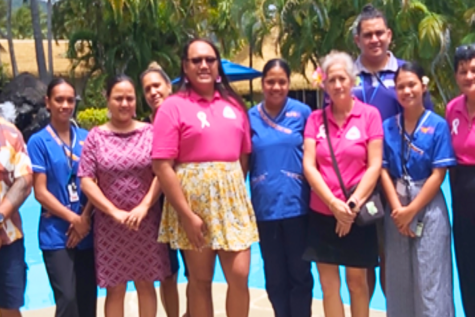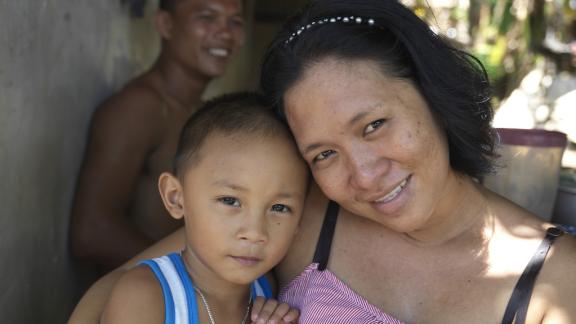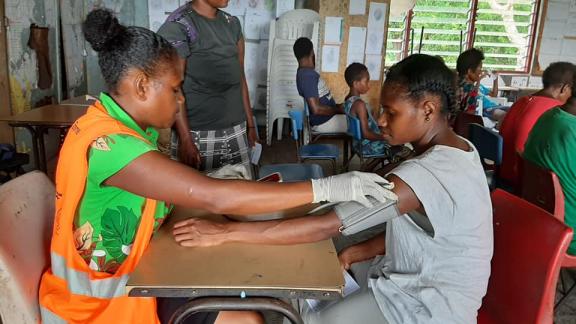Spotlight
A selection of resources from across the Federation

Cook Islands, New Zealand
Ora’anga Meitaki no te Vainetini: Cook Islands Women’s Wellbeing in the Context of Abortion
In 2022, research on abortion, including unsafe abortion, in Cook Islands was conducted by the University of New South Wales, University of the South Pacific Cook Islands Campus Te Puna Vai Mārama | Centre for Research, and Cook Islands Family Welfare Association (CIFWA). Ora’anga Meitaki no te Vainetini: Cook Islands Women’s Wellbeing in the Context of Abortion includes the lived experiences and stories of women, advocates, support persons and health workers in the Cook Islands and Aotearoa New Zealand.
Filter our resources by:


| 18 November 2016
No Crisis Too Great
Annually 65 million people in the ESEAO Region are displaced due to conflicts and natural disasters. The worst hit are women and children, particularly from poorer, developing countries where the threats of climatic risks exacerbate the spread of the loss of lives and personal hardship. Launched in 2007, IPPF's emergency response project, SPRINT, currently operates across 16 countries in Asia Pacific and Sub Saharan Africa, out of which 8 are in the world’s top 15 high-risk, disaster-prone countries. IPPF-SPRINT, together with its network of country member associations, works to address sexual and reproductive health issues by helping survivors of disasters deal with gender-based violence, raising awareness on sexually transmitted infections, helping with management of HIV, and providing maternal healthcare for these displaced people. Through partnership with local agencies, IPPF-SPRINT has delivered critical sexual and reproductive health services that have significantly reduced preventable deaths and injuries in crisis settings. The various IPPF-SPRINT regional offices work with governments and decision-makers to promote, protect, and fulfil SRHR through changes in policy and programmes as well as funding for information and services. Since 2013, under SPRINT 2, SPRINT ESEAOR and its national partners have responded to 12 emergencies, served 69,214 people, providing critical SRH services to populations affected by disasters and emergencies.

| 18 November 2016
Sustainable Development Goals Advocacy Manual
The Advocacy Manual is meant to provide relevant information and practical tools to develop and execute national advocacy strategies and plans on asserting SRHR in the broad framework of the SDGs. Specifically, the toolkit will help MAs and allied Civil Society Organizations to: 1. Understand how ICPD and MDGs as advocacy platforms influenced the post-2015 processes; 2. Appreciate the 2030 Agenda on Sustainable Development and the opportunities it presents for continuing SRHR advocacy; 3. Develop and implement advocacy strategies and plans to influence national agenda formulation on SDG/SRHR; and 4. Lead and facilitate actual advocacy campaigns to assert SRHR issues in the SDG National Agenda.
| 11 October 2016
Happy 1st Birthday, Sustainable Development Goals!
Share the cake and share our message to global leaders on the crucial importance of sexual health around the world. Only twelve months ago, every government at the United Nations signed up to the 2030 Agenda on Sustainable Development and agreed to take unprecedented steps to achieve gender equality and ensure access to sexual and reproductive health. The commitment is there but we now need to make sure that this translates into action on the ground, action at country level around the globe.
| 17 June 2016
Financial Statement 2015
IPPF’s total income has fallen by US$10.0 million from US$126.2 million to US$116.2 million. This reduction is due to a fall in unrestricted government income of US$5.8 million, a reduction of restricted government income of US$6.2 million and reduced donations in kind of US$0.6 million offset by an increase in restricted grants from multilaterals of US$4m with the balance of US$0.9 million decrease in other income and trading activities. The total decrease is split between restricted and unrestricted funds by US$2.3 million and US$7.6 million respectively. With the exception of Norway and Japan, all government (more significantly Australia and Sweden) donors have held level or increased their unrestricted funding to IPPF in the donor currency. However the strengthening of the US dollar has had a significant impact, effectively reducing US dollar unrestricted income by approximately 14% on a like for like basis compared to 2014. Total expenditure has decreased from US$137.5 million to US$131.8 million. Unrestricted expenditure has risen from US$84.2 million to US$85.6 million while restricted expenditure has fallen from US$53.3 million to US$46.2 million. The increase in unrestricted expenditure is driven by an exchange loss (US$1.9 million) and the use of US$8.9m designated funds to provide support in a number of areas: support in South Asia for system strengthening (US$2.3m); support for resource mobilization at regional and central level (US$1.5 million); campaign and advocacy for UN Liaison office (US$0.9 million); scale up fund for SGBV support to MAs (US$0.5 million); contingency spend on various activities (US$0.4 million). Restricted expenditure levels are driven by the timing of donor funded programmes, which vary on a year-by-year basis. This has resulted in an unrestricted net operating expenditure of US$13.4 million before other unrecognized gains and losses and a restricted deficit of US$2.1 million, to generate a total operating deficit of US$15.6 million. After taking into account actuarial gain on the defined benefit pension scheme and investment losses the resulting net movement in funds was a reduction of US$13.6 million. The level of unrestricted income received was approximately US$4 million less than forecast primarily due to the strength of the US dollar versus donor currencies and the expenditure in excess of income levels was funded using approved designated funds (US$2m million). This resulted in a decrease in general reserves to US$21.9 million and a fall in designated reserves to US$73.3 million.
| 04 February 2016
IPPF's humanitarian response
During times of crisis sexual reproductive health services are a necessity. Access to sexual and reproductive health services, even in the midst of war or natural disaster, is a human right which does not only saves lives in the short run, but also helps build resilience amongst refugees and displaced people. The statistics of women affected in humanitarian crises are shocking. It is estimated that 26 million of the 100 million people are in need of humanitarian assistance, are women and adolescent girls of reproductive age - 500 of these women and girls die every day from complications related to pregnancy and childbirths.









